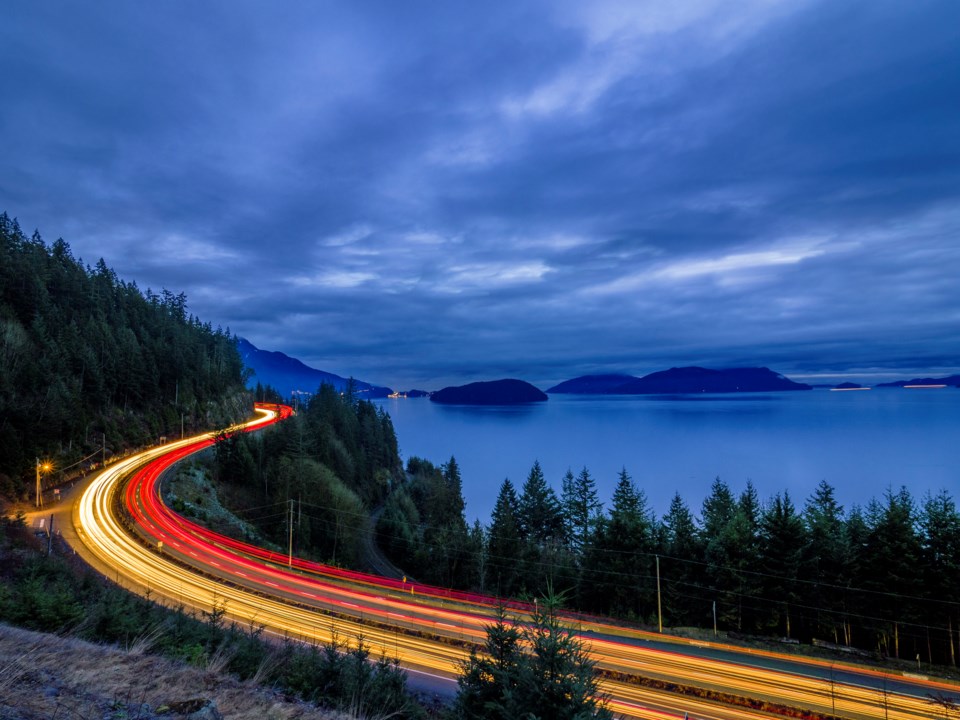I came down the S bends south of Britannia Beach carefully, given my years of caution there on ice. Although this was high summer and dry, it was nearly dark.
The Tantalus Range rose above the black waters of Howe Sound, the sun setting far behind the mountains creating a silhouette of their peaks.
On the last turn, the lane flowing past me (going south) was lit up like a brilliant cloud. Headlights of the first 50 stuck cars illuminated the road and the stuff strewn across it, many motorbikes leaning against the concrete barriers, the trees lit up from underneath, and a glow in the low sky.
With no one behind me, I could slow down to 40 kilometres per hour, and then see the people crouched over the covered bodies and metal and plastic debris, people kneeling, people running, finally vehicles with lights flashing driving forward along the shoulder. There had been no on-coming traffic for four minutes or so.
I had not noticed that emptiness because my mind was dwelling on the two racing motorbikes speeding at 130 km beyond the crash, on the corners just south of Furry Creek. At that speed, going over 2 km a minute, they could reach a long way south. And no one to follow them.
Hundreds of cars were arriving, on this Friday night, to this accident spot at 9:30 p.m—just to be stuck there. Soon there was a river of trapped vehicles on the highway. Only now, I realized why the road had been so empty down south. As we reached the Britannia stop light, the ambulances started to arrive with lights flashing and sirens blaring, unable to get through.
The response seemed to be working OK. Others can judge that. The railway tracks gleamed promisingly in the bright lights, yet still not used “by design.” How many of these people could have made their journey by train? Are we getting so used to this foolishness that it is part of our normal routine?
Bob Anderson
Burnaby



